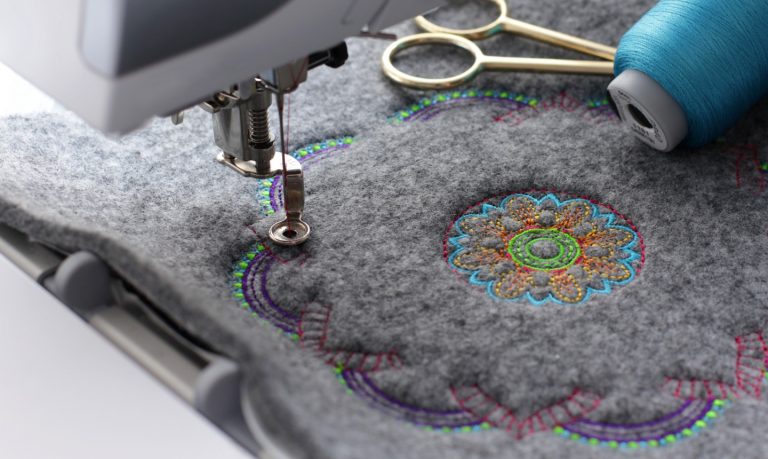Best Digitizing for Embroidery: Improve Your Tasks
Wiki Article
Streamlining the Art of Embroidery Digitizing: Step-by-Step Guide
As technology continues to development, the digitization process has actually ended up being more accessible, enabling enthusiasts to bring their complex styles to life with simplicity. In this guide, we will certainly untangle the intricacies of embroidery digitizing, breaking down each action systematically to enhance the process and empower both beginners and skilled embroiderers alike.Comprehending Needlework Digitizing Software Program
Embroidery digitizing software program acts as an essential tool for transforming intricate designs right into electronic styles suitable with embroidery makers, assisting in precise sewing and modification. This customized software program permits customers to import various image data layouts, such as JPG or PNG, and convert them into needlework machine-readable styles like DST, EXP, or PES - Digitizing for Embroidery. By making use of attributes like stitch editing, rug alternatives, and thread shade option, digitizing software program allows customers to manage every element of the design procedureMoreover, advanced needlework digitizing software program supplies tools for creating intricate designs, adjusting stitch thickness, and integrating detailed information. Users can additionally sneak peek the style prior to sewing it out, making certain accuracy and lessening errors. Furthermore, several software application programs offer automatic attributes that help enhance the digitizing procedure, conserving effort and time.
Understanding the capabilities of needlework digitizing software is important for achieving premium lead to embroidery projects. By understanding this tool, embroidery fanatics and professionals can release their creativity and bring complex layouts to life with accuracy and effectiveness.

Picking the Right Style Documents
After familiarizing yourself with the capacities of embroidery digitizing software application, the following essential action in the process is choosing the right style file for your task. Digitizing for Embroidery. When choosing a layout apply for embroidery digitizing, it's necessary to think about the complexity of the style, the size of the last product, and the kind of textile you will be dealing withFor intricate layouts with fine details, a high-resolution image or vector file is suggested to guarantee that the needlework machine can precisely replicate the design. In addition, the size of the end product plays a substantial duty in picking the right layout documents. Larger styles may call for higher resolution files to keep clearness and sharpness.
Furthermore, the kind of material you will certainly be stitching on affects the selection of design file. Various textiles may need adjustments in the design documents to ensure that the stitches are appropriately straightened and the style looks like meant. By very carefully picking the best layout file based on these variables, you can establish on your own up for a successful needlework digitizing procedure.
Digitizing Devices and Strategies
Using specialized software program and accuracy methods, digitizing tools are necessary in transforming complex designs into embroidery-ready files. Needlework digitizing software application, such as Wilcom, Hatch, or Embrilliance, supplies the needed platform to convert artwork right into stitch information. These programs provide attributes like stitch modifying, rug choices, and text devices to make sure the design equates effortlessly onto fabric.Among the essential techniques in digitizing is developing a clear course for the needlework device to follow. This entails digitizing each component of the style with precision, figuring out stitch types, thickness, and directions. By making use of tools like digitizing tablets or software-specific plugins, embroiderers can attain a high degree of accuracy in their digitized layouts.
In addition, understanding the art of underlay stitching is essential for producing high quality needlework. Underlay stitching supports the textile and produces a structure for the layout, guaranteeing that the end product is both visually attractive and resilient. By understanding these digitizing devices and strategies, embroiderers can elevate their craft and bring detailed styles to life with precision and performance.
Personalizing Stitch Kinds and Instructions
Having actually developed a structure in digitizing tools and techniques, a vital element beforehand needlework workmanship lies in personalizing stitch kinds and directions with accuracy and objective. The selection of stitch kinds can significantly influence the general appearance and structure of the stitched style. Satin stitches, understood for their smooth and shiny coating, work well for producing boundaries and text. On the other hand, fill stitches are ideal for covering larger locations successfully. By tactically combining these stitch kinds, embroiderers can achieve depth and measurement in their styles.Additionally, the direction of stitches have a peek here plays a vital function in boosting the visual appeal of the final needlework. By trying out with different stitch angles and patterns, embroiderers can bring their layouts to life with exceptional information and complexity.
Screening and Refining Your Digitized Layout
To guarantee the precision and quality of your digitized style, comprehensive screening and improvement are essential steps in the needlework digitizing procedure. As soon as best site you have finished the digitization of your style, it is critical to check it before continuing with the actual needlework. Testing allows you to recognize any prospective problems such as string breaks, sew thickness problems, or design distortions that might impact the outcome.
After testing, it is very important to improve your digitized layout based on the feedback from the test sew-out. This might involve tweaking sew settings, readjusting thickness, or making adjustments to the general layout to accomplish the preferred end result. By iterating with screening and improvement, click for more info you can adjust your digitized design to excellence prior to relocating forward with the real needlework procedure.
Verdict
To conclude, grasping the art of embroidery digitizing calls for a thorough understanding of the software application, choosing the appropriate style data, utilizing digitizing devices and methods, personalizing stitch types and instructions, and testing and improving the digitized layout. By following these actions, embroiderers can simplify the digitizing process and develop top notch embroidered designs with accuracy and efficiency.Report this wiki page